Signific
ance in our daily life
Magnet and Principles of Magnetism are one of those things that we come across in the daily course of our lives In our surroundings from television to mobile phones, cars, computers, medical equipment, MRI machines, toys, credit cards, Motors and Generators, Transformers, Relays, Electric bells and buzzers, Loudspeakers and headphones, Actuators, Magnetic recording and data storage equipment: tape recorders, VCRs, hard disks, many scientific types of equipment such as mass spectrometers, Particle accelerators, Magnetic locks, magnetic levitation, used in a maglev train or trains Induction heating for cooking, manufacturing, and hyperthermia therapy and many more.
Magnets are incredibly important, particularly due to the relationship between electricity and magnetism. They play a very important role in our lives. Because of their magnetic qualities, magnets are put to various uses by the industries.
Depending on their magnetic qualities and composition while some of the magnets are visible in the devices that they are used, others are fitted inside the inner workings of the devices. Thus, it can be said that even if you can’t see the magnets they are silently doing their work unseen.
Since in many of the NDT methods Magnetic principles play a principle role hence this topic becomes important to learn as an NDT Technician.
History of Magnets
According to Greek legend, magnetism was first discovered about 4,000 years ago by a shepherd named Megnes, who lived in Megnesia, Greece. Megnes was herding his sheep through the mountains. Suddenly he noticed the ferrule of his stick and nails in his sandals got stuck to a rock(lodestone). The iron in his stick and nails had become attracted to the magnetic rock. The stone was named as magnetite, after the name of the shepherd or the country it was found in. It was also known as loadstone because of its attractive properties.
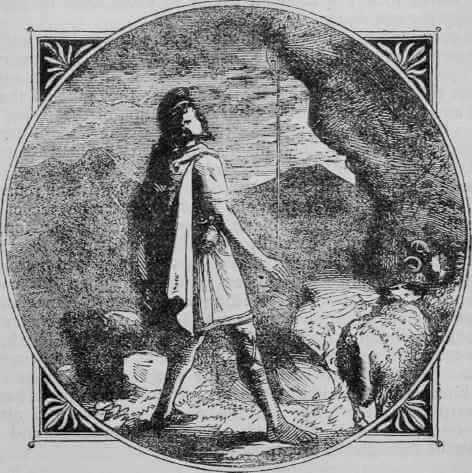
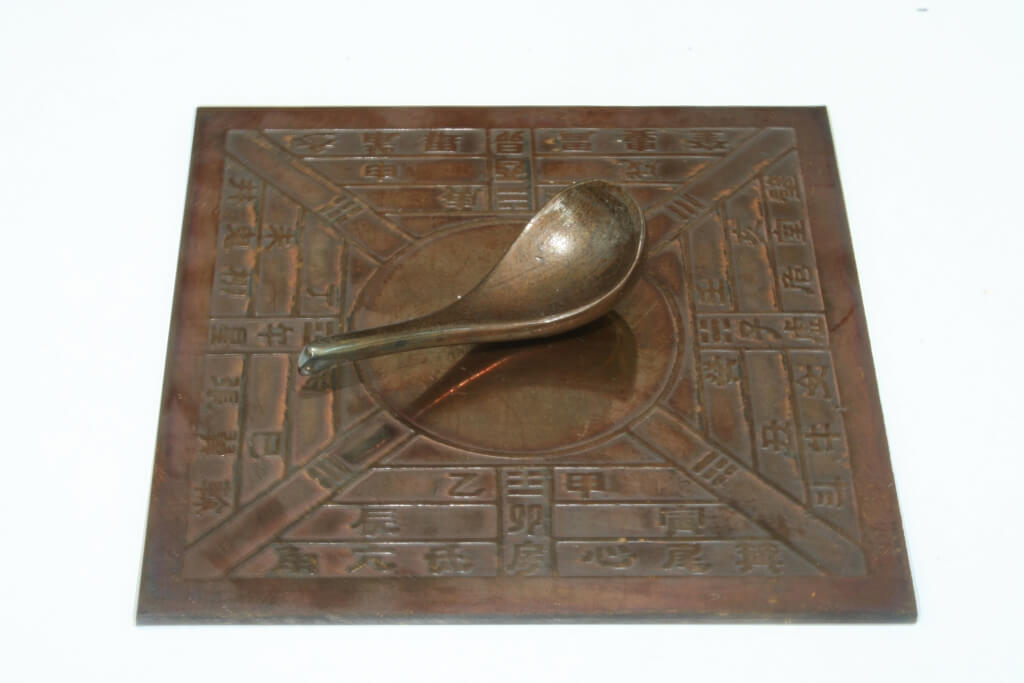
the early Chinese are believed to have first used them in magnetic compasses for navigation purposes. They realized magnets could direct needles and correlated with the north pole, and used that information to navigate. The early compasses were created with lodestone because modern magnets were not invented yet. Lodestone comes from the mineral magnetite and is the only naturally-occurring magnet.
A reconstruction of an early Chinese compass. A spoon made of lodestone, its handle pointing south, was mounted on a brass plate with astrological symbols.
There are three main types of magnets which include
Permanent magnets: a magnet that retains a high degree of magnetization virtually unchanged for a long period of time.
Temporary Magnets: A temporary magnet is a magnet that remains magnetized for only a small time interval as compared to a permanent magnet.
Electromagnets: a soft metal core made into a magnet by the passage of electric current through a coil surrounding it.
Definitions
Magnetic Field: the volume within and surrounding either a magnetized part or a current-carrying conductor wherein a magnetic force is exerted.
Magnetic flux density is defined as the amount of magnetic flux in an area taken perpendicular to the magnetic flux’s direction.
Magnetic flux density (B) = Φ /Area Unit: Weber’s per metre2
Magnetic field strength: the measured intensity of a magnetic field at a point, expressed in oersteds or amperes per meter.
Magnetic field strength (H) = Fm/le Unit: amperes per meter
A MAGNETIC FIELD LINE OR MAGNETIC FLUX LINE shows the direction of a magnet’s force and the strength of a magnet
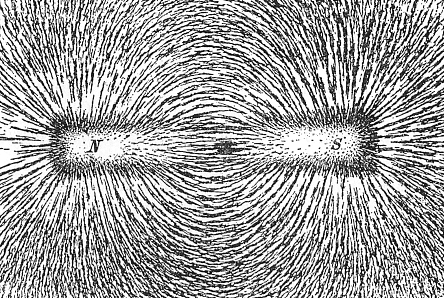
CHARACTERISTICS OF MAGNETIC FIELD LINES:
- they do not intersect each other
- the relative strength of magnetic field lines is given by the degree of closeness (they are strongest and most dense at poles)
- their direction is indicated by arrows in the line at any point
- the direction of field line inside the magnet is from south to north pole and vice-versa outside the magnet
- They seek the path of least resistance between opposite magnetic poles.
- They never cross one another.
- Magnetic lines of force only enter or leave from the poles of the magnet.
Type of Magnetic Materials
Di- magnetic:
- Diamagnetic materials are those whose atoms have only paired electrons.
- Hydrogen, ammonia, bismuth, copper, graphite
- diamagnetic substances are repelled by a nearby magnet.
Para magnetic:
- Paramagnetic substances are those which are attracted by magnets and when placed in a magnetic field move from weaker to stronger parts of the field.
- Aluminum, manganese, platinum are some examples of paramagnetic materials
- If a bar of paramagnetic material is suspended in between the pole pieces of an electromagnet, it sets itself parallel to the lines of force.
Ferromagnetic :
- Ferromagnetic substances are those which are attracted by the magnets and can also be magnetized.
- Iron, nickel, cobalt and their alloy
- Ferromagnetic materials are those materials which exhibit a spontaneous net magnetization at the atomic level, even in the absence of an external magnetic field.
Anti ferromagnetic
- These are similar to Ferromagnetic materials but the spin moments in each domain are aligned opposite to each other. Consequently, each domain results in a zero magnetization and hence a zero spontaneous magnetization.
- Examples: Chromium, Fe2O3, FeMn alloy, and NiO, etc.
Ferrimagnetic
- These are similar to anti-ferromagnetic materials, but the magnitude of one set is not equal to the magnitude of other sets of spins.
- As a result, each domain results in a non-zero magnetization and hence a non-zero spontaneous magnetization of the whole sample. But the net dipole moment is always less compared to ferromagnetic net dipole moment.
- Example: Fe3O4
Hysteresis Loop
The hysteresis loop is a four-quadrant B-H graph from where the hysteresis loss, coercive force and retentivity of magnetic material are obtained.
Below figures show the hysteresis curve of a ferromagnetic material bar in a coil applying an alternating current.
- By increasing the magnetizing field strength (H) in small increments and measuring the flux density (B) at each increment, the relationship between magnetic field strength and flux density can be plotted.
- The relationship between magnetic field strength and flux density is not linear for ferromagnetic materials. A specific change in H may produce a smaller or larger change in B, as shown in graphs below the initial curve for an unmagnetized piece of steel.
- Starting at point 0 (Zero magnetic filed strength and zero magnetic flux) and increasing H is small increments, the flux density in the material increases quite rapidly at first, and then gradually slows until point A is reached.
- At point A, the material becomes magnetically saturated. Beyond the saturation point, an increase in magnetic field strength does not increase the flux density in the material.
- In the diagram of full hysteresis loops, the curve (0, A) is often drawn as a dashed line because it occurs only during the initial magnetization of an unmagnetized material. It is referred to as the virgin curve of the material.
- When the magnetic field strength is reduced to zero, the flux density slowly decreases. It lags the field strength and doesn’t reach zero. The amount of flux density remaining in the material (line B,0) is called residual magnetism or remanence The ability of ferromagnetic materials to retain a certain amount of magnetism is called retentivity.
- Removal of residual magnetism requires the application of magnetic field strength in an opposite or negative direction. When the magnetic field strength is first reversed and only a small amount is applied, the flux density slowly decreases. As additional reverse field strength is applied, the rate of reduction in flux density (B, C) increases until it is almost a straight line where B equals zero.
- The amount of magnetic field strength necessary to reduce the flux density to zero is called coercive force. Coercive force is a factor in demagnetization and is also very important in eddy testing of ferromagnetic materials.
- As the reversed magnetic field strength is increased beyond point C, the magnetic flux changes its polarity and initially increases quite rapidly. It then gradually slows until point D is reached. This is the reverse polarity saturation point, and additional magnetic field strength will not produce an increase in flux density.
- When the reversed magnetic field strength is reduced to zero the flux density again lags the magnetic field strength leaving residual magnetism in the material(0, E). The flux densities of the residual magnetism from the straight and reversed polarities are equal (0, B is equal to line 0, E)
- Removal of the reversed polarity residual magnetism requires the application of magnetic field strength in the original direction. Flux density drops to zero at point F with the application of coercive force (0, F). Increasing the field strength results in the magnetic polarity changing back to its original direction on the hysteresis diagram. This completes the hysteresis loop A, B, C, D, E, F.( note: C,D,E,F is a mirror image of curve C,B,A,F)
Magnetic Permeability:
it is described as the ease with which materials can be magnetized. It is the ratio between the flux density and the magnetic field strength.
The reciprocal of permeability is reluctance, defined as the resistance of a material to changes in the magnetic field strength
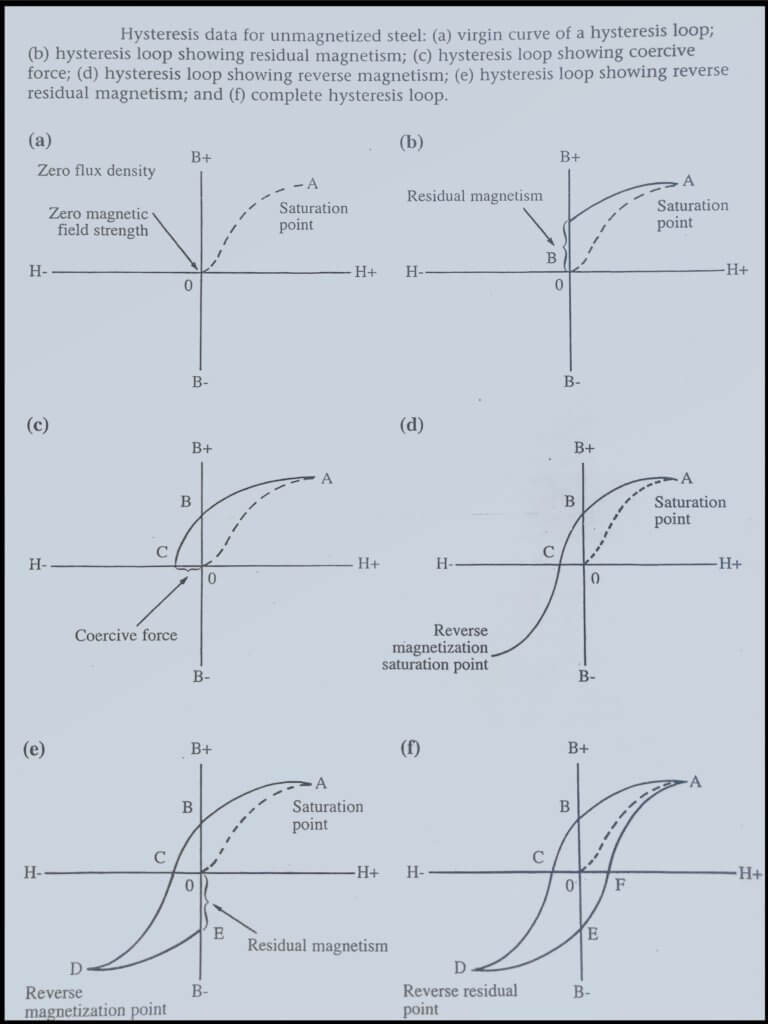
Electromagnetic Induction
Principally when current passes through a conductor, a magnetic field is formed in and around the conductor, this is called induced magnetic field and vice versa also occurs.
If the conductor has a uniform shape like a circular rod. The density of the external field is uniform at the same radial point along the length of the conductor.
At any point on the conductor, the magnetic field is the strongest at the surface of the conductor and decreases as the distance increases from the conductor surface.
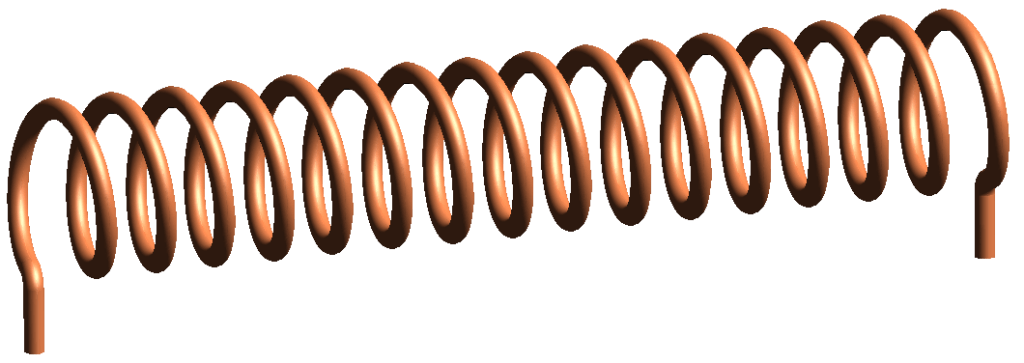
A solenoid is a type of electromagnet, the purpose of which is to generate a controlled magnetic field through a coil wound into a tightly packed helix. The coil can be arranged to produce a uniform magnetic field in a volume of space when an electric current is passed through it. The term solenoid was coined in 1823 by André-Marie Ampère to designate a helical coil.

We have covered some of the topics of magnetic principles in our blog
Introduction to magnetic particle testing please read that also.
References’:
https://byjus.com/physics/discovery-magnets/
Brainly.in – https://brainly.in/question/9678623#readmore
PTP magnetic particle testing classroom training Book
Cover Photo: https://www.exploratorium.edu/sites/default/files/f0233.gif
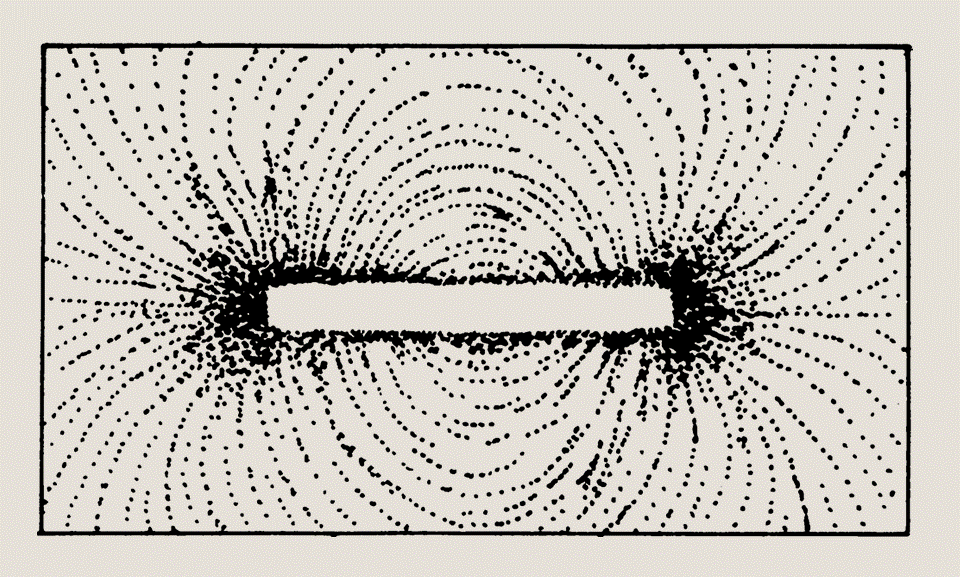
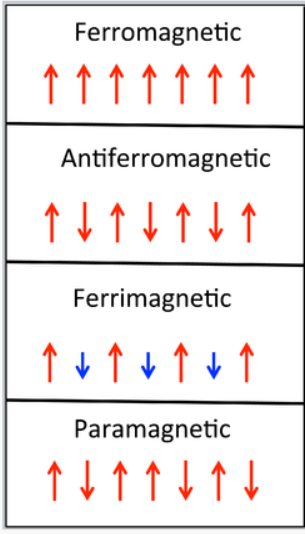
Last paragraph- DEFINATLEY!!!!!!!! Perfect wording:) like, i cant imagine a world with out this condition
Thanks for your Comment.
Hi there! This post could not be written any better! Reading through this post reminds me of my good old room mate! He always kept talking about this. I will forward this article to him. Pretty sure he will have a good read. Many thanks for sharing!
Thank you for the appreciation.
Great, thanks for sharing this article.Much thanks again. Cool.
Really enjoyed this blog article.Thanks Again. Great.
Great, thanks for sharing this blog.Much thanks again. Awesome.
I appreciate you sharing this blog post.Much thanks again. Really Great.
Im grateful for the blog.Really looking forward to read more. Cool.
Very good post.Thanks Again. Really Cool.
Wow, great blog.Much thanks again. Fantastic.
I think this is a real great blog post.Much thanks again. Awesome.